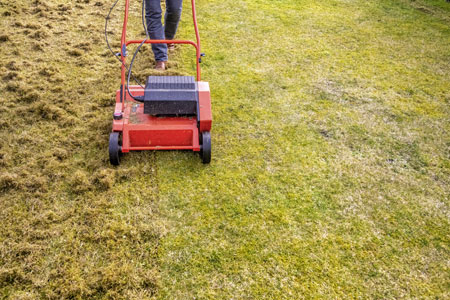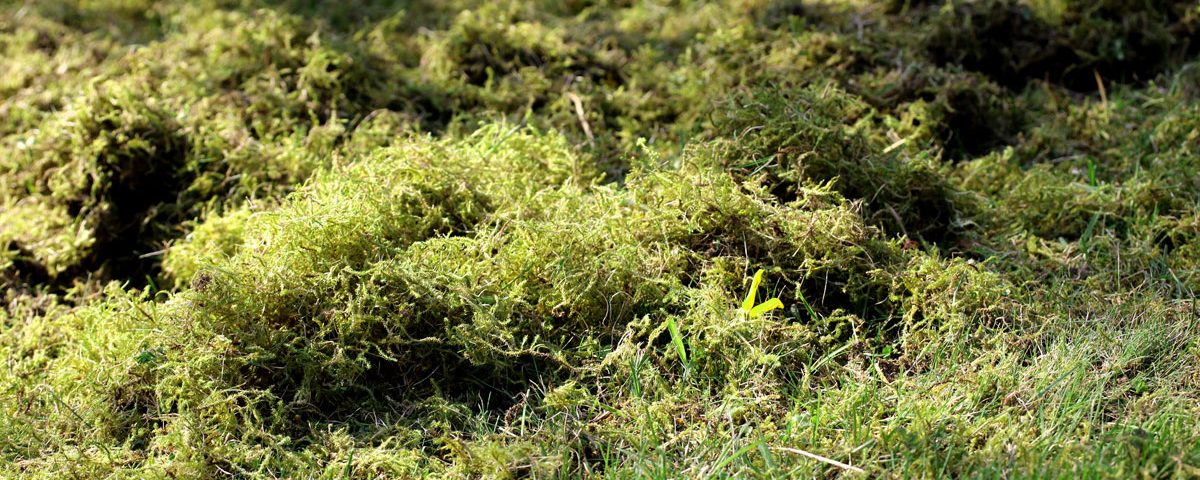
Our Clients:

How to Manage Moss in Lawns

Sod, Seed, or Hydroseeding: Which Option Is Best For Your Lawn?
February 3, 2020
How Long Does it Take For Sod to Take Root?
July 27, 2020What is Moss?
If you live in the Pacific Northwest and work in lawn care or own a home, you are probably familiar with moss. The mild, wet winters of Washington create the ideal environment for moss to grow. However, while it is common for homeowners to find moss in their yards, it is usually a sign of an unhealthy lawn or unfavorable conditions for growing grass.
Moss is different from most weeds found in lawns in that it doesn’t have a true root or stem system. It can be found growing on rocks, grasses, trees, and anywhere else where the right conditions are met. Since it doesn’t have a proper root system, it may seem strange for moss to grow where it does. This is possible because moss reproduces by spores, not seeds, and requires very little soil, if any at all, to grow. Most mosses absorb nutrients through root-like filaments or by absorbing the water on their leaves.
Why Does My Lawn Have Moss?
Since moss requires a high-moisture environment to grow, it is relatively common for homeowners to find moss in their lawns. The wet fall and winter months create the perfect conditions for moss to reach peak growth come spring. Because grass doesn’t grow as well in the winter months, mosses can invade much easier. Come summer, when conditions are drier and turfgrass growth increases, moss growth usually declines. However, moss can continue to grow through summer in some cases. Any moss growth is a sign that something may be wrong with your lawn, and if the growth continues into summer, you should have your yard inspected by a lawn care expert.
Reasons for Moss Growth in Lawns
If you notice small sections of moss growth in your yard that only appear during the winter and spring, there might not be much cause for concern. However, if your lawn has significant moss growth that remains throughout the year, one or more of these issues could be the culprit:
- Too much shade: Moss doesn’t need sunlight to flourish, but turfgrass does. If your lawn is too shady, it could be fostering moss growth.
- Poor drainage: While turfgrass and moss both require water to thrive, too much water can inhibit grass root growth, allowing moss to take over.
- Compacted soil: Soil compaction reduces drainage and makes it hard for roots to grow. Since moss does not rely on soil for growth, it can thrive in lawns with limited grass growth from compaction.
- Acidic soil: Because moss doesn’t take root in the ground, it can continue to grow even though nutrients are limited. Turfgrass, however, does suffer if the pH is below 6.0.
- Low fertility: When there are not enough nutrients for turfgrass to grow, it can thin out, giving moss the advantage.
- Sparse areas of turfgrass: The less turfgrass there is for moss to compete with, the more opportunities the moss will have to invade and take over the lawn.
- Drought: If your lawn does not get enough water in the drier months, it may not grow back fast enough come fall and winter to compete with moss growth.
How to Promote a Healthy Lawn and Avoid Moss Growth
If homeowners do not take the right steps, moss can easily invade and overtake their lawns. Moss can be controlled if the proper environmental conditions and cultural practices are met to promote healthy, dense turfgrass.
Methods for Ridding the Lawn of Moss
There are several cultural practices and environmental conditions that need to be met to promote a healthy lawn and prevent moss growth.
- Get plenty of sunlight: Too much shade in the yard can foster moss growth and inhibit turfgrass. Thin out trees and shrubs by pruning back limbs and branches to allow more sunlight through. If there is still too much shade, you should consider planting a new lawn with grass species that are more shade tolerant.
- Fertilize the soil: Soil that is lacking proper nutrients will result in sparse turfgrass growth. The deficiency usually is from pH imbalances. Liming the soil can help maintain an adequate pH level needed for turfgrass to thrive.
- Adequate drainage: When there is excessive moisture in the lawn from poor drainage or too much irrigation, it provides the perfect environment for moss growth. Methods to improve drainage to help turfgrass root growth include aeration, core cultivation, establishing a grade or surface slope, and sand topdressing.
- Dethatch: Moss tends to thrive in the thatch layers of the lawn where the dead stems and roots exist between the living blades of grass and the soil. Dethatching and regular moving can help prevent moisture buildup, which will lessen the opportunities for moss growth.
Chemical Treatment for Moss Removal
If improving environmental conditions and following cultural practices to rid your lawn of moss still doesn’t do the trick, you can follow up with a chemical treatment made to kill moss. An effective treatment for moss is using fertilizer containing iron for your first application of fertilizer in the spring. If you want to treat moss separately from applying fertilizer, you can use a product specifically made to kill moss. There are several products available to homeowners designed to kill moss in lawns. When the moss dies and turns black, you can rake it out of the lawn.
Country Green Turf Farms
If you are struggling to rid your lawn of moss, the experts at Country Green Turf Farms can help. In addition to providing high-quality sod and hydroseeding, we offer several other comprehensive turf solutions to help Seattle homeowners achieve a healthy, lush lawn. Call us to find out how Country Green can help rid your lawn of moss today!










